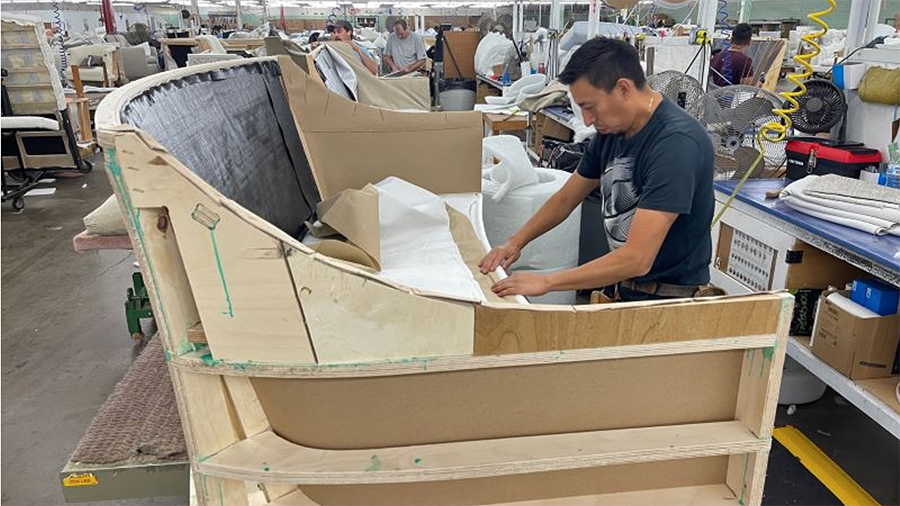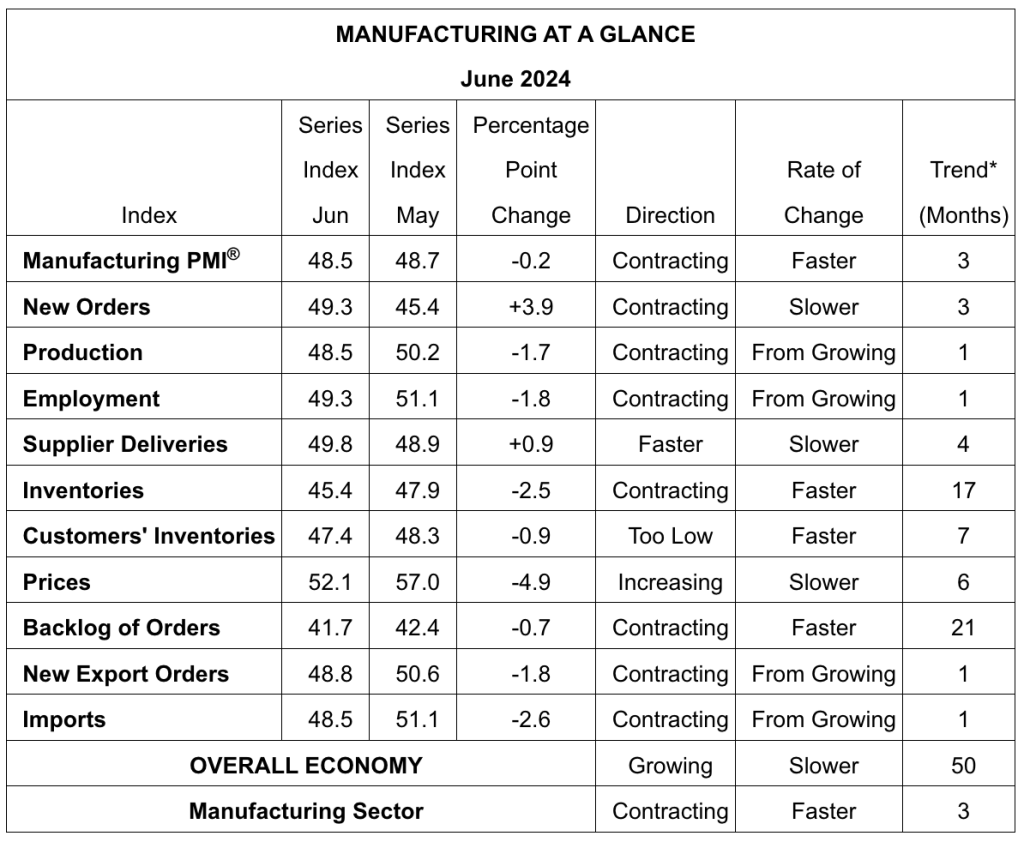Economic activity in the manufacturing sector contracted in June for the third consecutive month and the 19th time in the last 20 months, according to commentary from the nation’s supply executives in the latest Manufacturing ISM Report On Business.
The Manufacturing PMI registered 48.5 percent in June, down 0.2 percentage point from the 48.7 percent recorded in May, said Timothy R. Fiore, CPSM, C.P.M., Chair of the Institute for Supply Management (ISM) Manufacturing Business Survey Committee, when issuing the latest report. “The overall economy continued in expansion for the 50th month after one month of contraction in April 2020,” said Fiore.
Fiore also noted that a Manufacturing PMI above 42.5 percent over a period of time generally indicated an expansion of the overall economy.
The latest Manufacturing ISM Report On Business indicates that:
- The New Orders Index remained in contraction territory in June, registering 49.3 percent, 3.9 percentage points higher than the 45.4 percent recorded in May.
- The June reading of the Production Index (48.5 percent) is 1.7 percentage points lower than the May figure of 50.2 percent.
- The Prices Index registered 52.1 percent, down 4.9 percentage points compared to the reading of 57 percent in May.
- The Backlog of Orders Index registered 41.7 percent, down 0.7 percentage points from the 42.4 percent recorded in May.
- The Employment Index registered 49.3 percent, down 1.8 percentage points from May’s figure of 51.1 percent.
- The Inventories Index registered 45.4 percent, down 2.5 percentage points compared to May’s reading of 47.9 percent.
- The New Export Orders Index reading of 48.8 percent is 1.8 percentage points lower than the 50.6 percent registered in May.
- The Imports Index dropped into contraction territory, registering 48.5 percent, 2.6 percentage points lower than the 51.1 percent reported in May.
- The Supplier Deliveries Index remained in “faster” territory, registering 49.8 percent, 0.9 percentage points higher than the 48.9 percent recorded in May.
Fiore said Supplier Deliveries is the only ISM Report On Business index that is inverted, a reading above 50 percent indicates slower deliveries, which is typical as the economy improves and customer demand increases.
“U.S. manufacturing activity continued in contraction at the close of the second quarter,” Fiore added. “Demand was weak again, output declined and inputs stayed accommodative.
Fiore said demand slowing was reflected by:
- New Orders Index improving to marginal contraction,
- New Export Orders Index returning to contraction,
- Backlog of Orders Index dropping into stronger contraction territory, and
- Customers’ Inventories Index moving into the low side of the “just right” range, neutral for future production.
Output, measured by the Production and Employment indexes, declined compared to May, with a combined 3.5-percentage point downward impact on the Manufacturing PMI calculation.
“Panelists’ companies reduced production levels month-over-month as headcount reductions continued in June,” Fiore noted. “Inputs, defined as supplier deliveries, inventories, prices, and imports, continued accommodating future demand growth. The Prices Index eased but remained in expansion, or ‘increasing‘, territory; the index registered its second month of cooling increases.”
Fiore continued, “Demand remains subdued as companies demonstrate an unwillingness to invest in capital and inventory due to current monetary policy and other conditions. Production execution was down compared to the previous month, likely causing revenue declines and putting pressure on profitability. Suppliers continue to have capacity, with lead times improving and shortages not as severe.
“Sixty-two percent of manufacturing gross domestic product (GDP) contracted in June, up from 55 percent in May. More concerning is the share of sector GDP registering a composite PMI calculation at or below 45 percent—a good barometer of overall manufacturing weakness—was 14 percent in June, ten percentage points higher than the 4 percent reported in May,” continued Fiore.
The eight manufacturing industries reporting growth in June (in order) are:
- Printing & Related Support Activities
- Petroleum & Coal Products
- Primary Metals
- Furniture & Related Products
- Paper Products
- Chemical Products
- Miscellaneous Manufacturing
- Nonmetallic Mineral Products
The nine industries reporting contraction in June (in order) are:
- Textile Mills
- Machinery
- Fabricated Metal Products
- Wood Products
- Transportation Equipment
- Plastics & Rubber Products
- Food, Beverage & Tobacco Products
- Electrical Equipment
- Appliances & Components
- Computer & Electronic Products
To read the latest Manufacturing ISM Report On Business, go here.
Image courtesy Universal Furniture’s domestic upholstery operations















